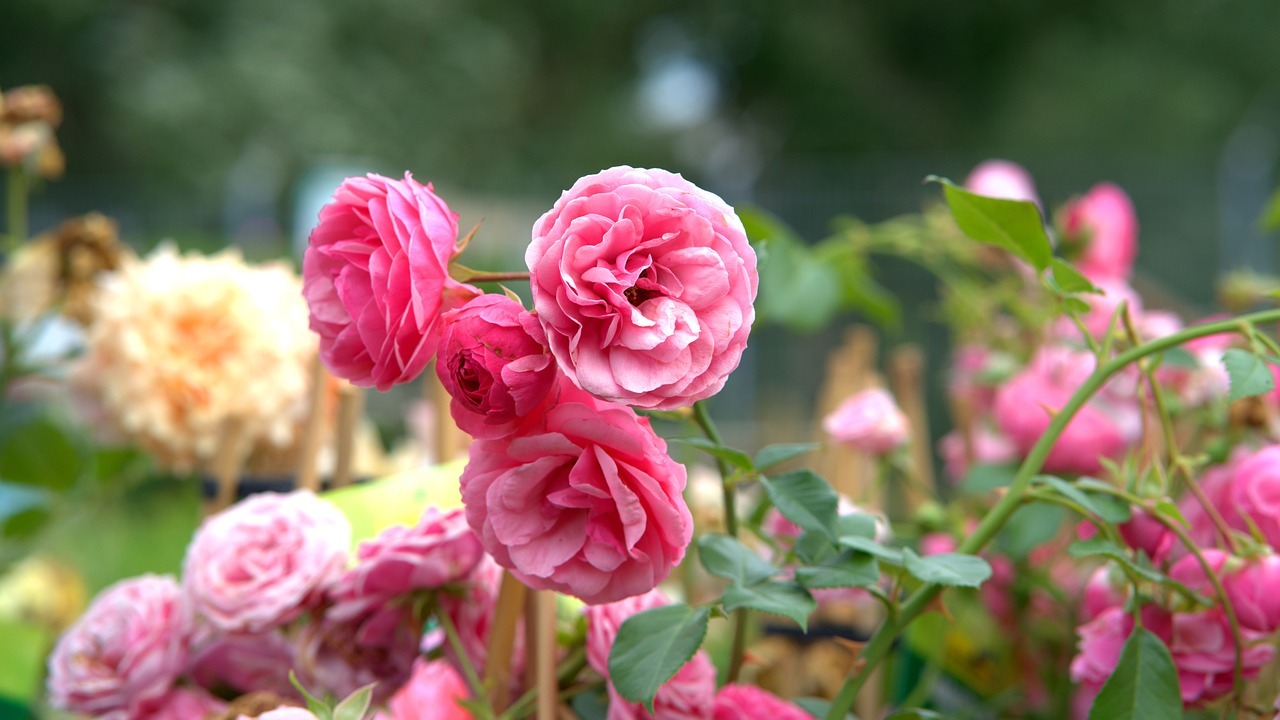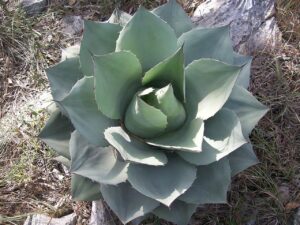Plus, Garden Experts Answer Your Rose Questions
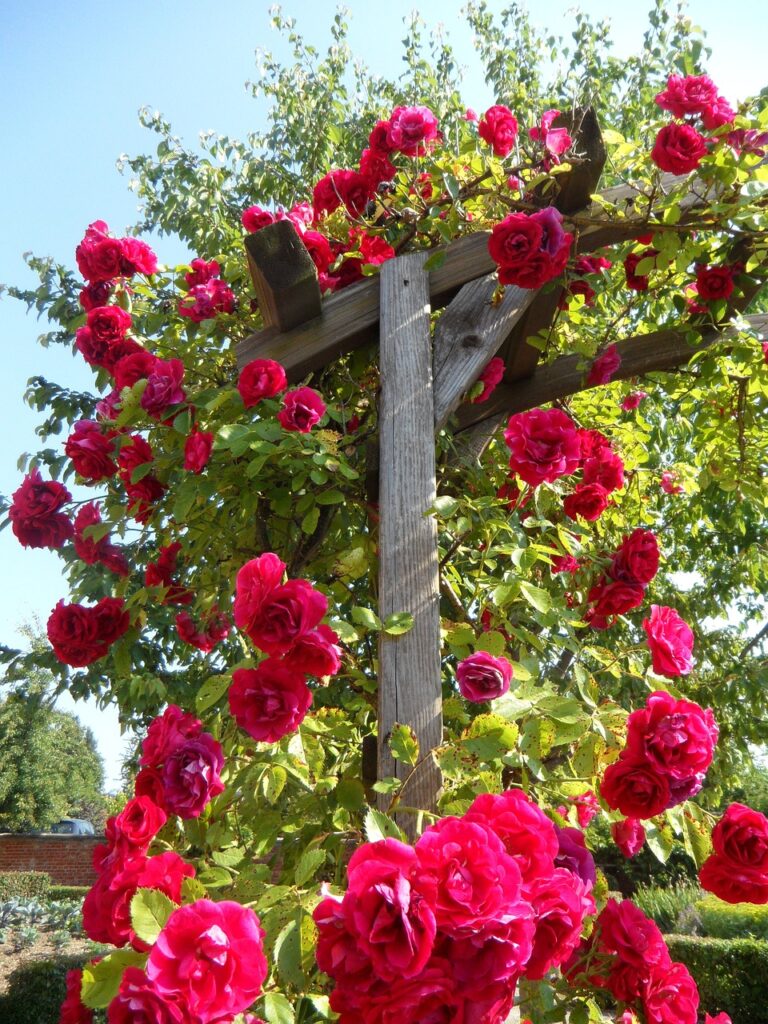
February is the month for roses—and not only because they are a favorite gift for Valentine’s Day. North Texas gardeners have known for decades that February is the best month to prune roses in anticipation of the next growing season.
But Texans have become understandably leery of growing roses since rose rosette disease swept the state several years ago. Some gardeners have given up on roses altogether after having to rip out diseased shrubs.
We asked the Garden’s followers on social media what they wanted to know about roses in the era of rose rosette disease. Here’s what our horticulturists and experts in the field have to say.
Rose rosette disease: What We Know and Where the Science is Going
What is rose rosette disease? Rose rosette disease was first noted in wild roses east of the Rocky Mountains more than 80 years ago, but North Texans became aware of the disease around 2010 when it began devastating the area.

The disease is a virus (rose rosette virus, or RRV) that is spread by the mouth of a microscope mite called Phyllocoptes fructiphilus. The mite frequently spreads from plant to plant by the wind but can also be transmitted via direct contact between an infected and healthy plant or via the tools, gloves and clothing of landscape workers. Researchers have found that the mite can infect a healthy plant within one hour of begin to feed on it.
How can I spot infection? Gardeners know a plant is infected when it begins to show signs of unusual growth. These can include:
- “Witches brooms” of new growth–that is, numerous stems growing in a clump.
- Thickened stems with excessive thorns.
- Discolored or distorted buds that fail to open.
- Red leaf mottling that does not disappear as leaves mature.
Rose rosette disease is always fatal to the plant. Possibly the only good thing about the virus is that only affects roses, so the other plants in your garden are not at risk.
If you think one of your roses has been infected, compare the plant with photos you find online. Do not take cuttings from the plant or the entire plant to the nursery where you bought it! You risk further spreading the disease.
To limit the spread of the disease, as soon as you discover a plant is infected, immediately dig up the entire plant (roots and all), bag it and dispose of it in the trash. Do not be tempted to add the dead shrub to your compost pile or place it in city compost carts.
“The mites can remain a live on any plant part in which it can extract the sap,” says Director of Horticulture Rob Bauereisen. “However, when the rose is removed, we are most concerned about the virus that remains alive within the infected roots. The virus can spread from root grafts of roses that are grown close together. Make sure you remove all of the roots of any infected rose.”
What have researchers learned? Scientists are working hard to understand RRV and develop strategies for treating and/or preventing the disease. So far, no treatment is available against the virus.
Controlling the spread of mites through the use of miticides has proven successful at the Garden, especially when different types of miticides are used in rotation. “We rotate them out and don’t use the same type each time when we spray,” says Bauereisen.
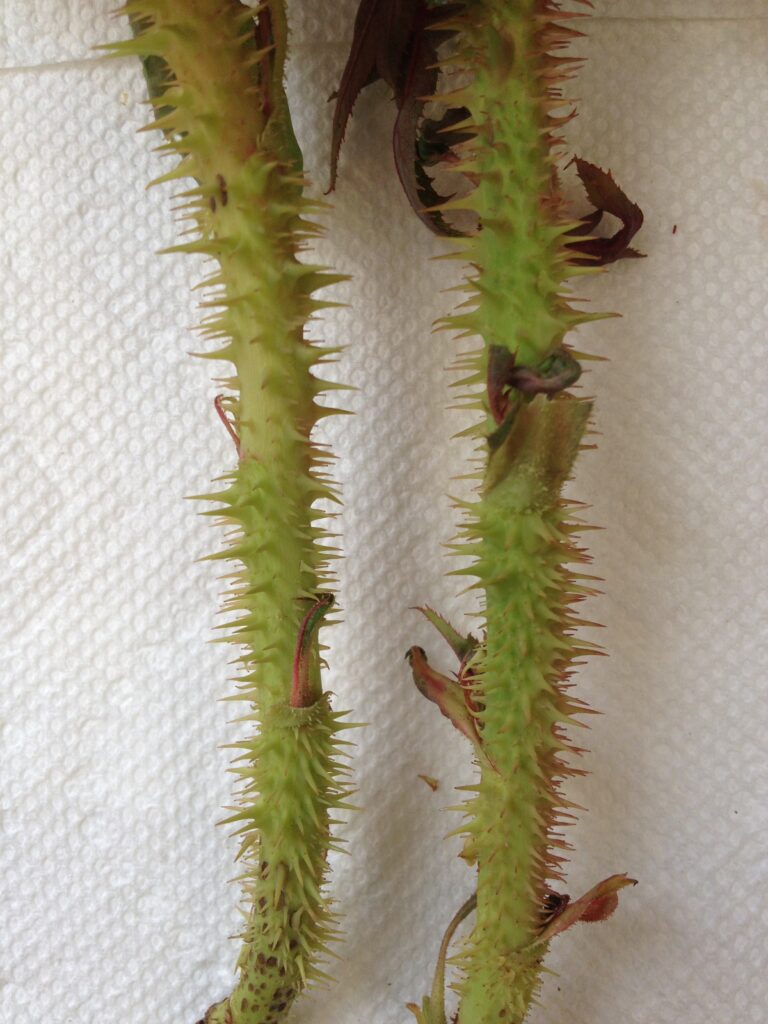
Horticultural oils can also be helpful; these are highly refined petroleum products that smother tiny insects and their eggs. Some experts suggest spraying roses with dormant oil in the winter after pruning and summer oil during the growing season, especially after removing the heads of spent blooms. However, these oils should not be applied when the temperature is 85 degrees or higher, meaning “summer” oils are only useful in our spring and fall. (Read labels carefully when applying any chemicals to your plants, for your safety and for that of other plants, local animals and insects, and the environment.)
The most effective strategy the Garden has found for preventing RRV involves spacing and companion plants. “We get great control of mites through spacing our roses apart as much as four to six feet,” says Bauereisen. “We also use companion plants such as perennials and ornamental grasses to provide barriers against the wind spread of mites.”
Ultimately, scientists hope to develop rose cultivars that resist infection by RRV. Texas A&M University, for example, leads the Sustainable Roses program with the goal of developing roses that will be resistant to both RRV and black spot, a common fungal infection.
But I really want to grow roses! What should I do?
First, don’t despair. The Garden’s own Rose Garden still bursts with beautiful blooms spring through fall, so it is possible to grow roses in North Texas, so long as you follow best practices and understand the risks.
1. Remove any infected roses from your property. Carefully inspect any roses you currently grow. At the first sign of infection, remove the plant, being careful to clear away all leaves, stems and roots–even a tiny bit of leaf litter can carry mites. Don’t touch healthy roses after removing an infected plant for at least 24 hours. Mites can live for several hours in your clothes on your shoes. If you remove an infected rose, do not immediately replant a rose in that location, since the mites might remain alive on roots. Wait at least a month before replanting a rose in that location.
Are some rose cultivars more or less vulnerable to RRV?
Maybe? Some preliminary research has identified roses with lower rates of transmission, but the jury is still out. The good news is that some roses that at one point seemed to be particularly prone to infection have been found to be no more susceptible than others. Knock-Out roses, for example, don’t seem to be at higher risk than other cultivars, despite the fact that huge numbers of these roses were devastated by the disease. In fact, these popular roses were frequently planted in mass groupings where the disease could—and did—spread rapidly.
2. Shop carefully. Inspect roses before buying to ensure they are as healthy as possible. You can’t spot the mites—they’re too small for the human eye—so look for irregular growth patterns.
3. Space out plantings. Leave plenty of breathing room around your roses so if one shrub becomes infected, others nearby might avoid the disease. The Garden separates its roses by four to six feet.
4. Monitor your roses frequently. Keep a close eye on your roses to check on irregular growth. If you are suspicious of any new growth, remove it immediately.
5. Prune heavily in winter (so, right now!) This should help remove any mites that have over-wintered in your plant. Texas gardeners like to get their pruning done as close to Valentine’s Day as possible. If you’re not sure how to prune roses, you can find numerous resources online or in rose reference books. Also take this opportunity to remove all leaf litter and dead stalks from around the base of your roses in case mites are lurking there.
6. Keep your roses as healthy as possible. It just makes sense that a healthy plant will be able to fight off disease more effectively than a stressed one. Make sure your roses are getting the light, water and nutrients they need to thrive.
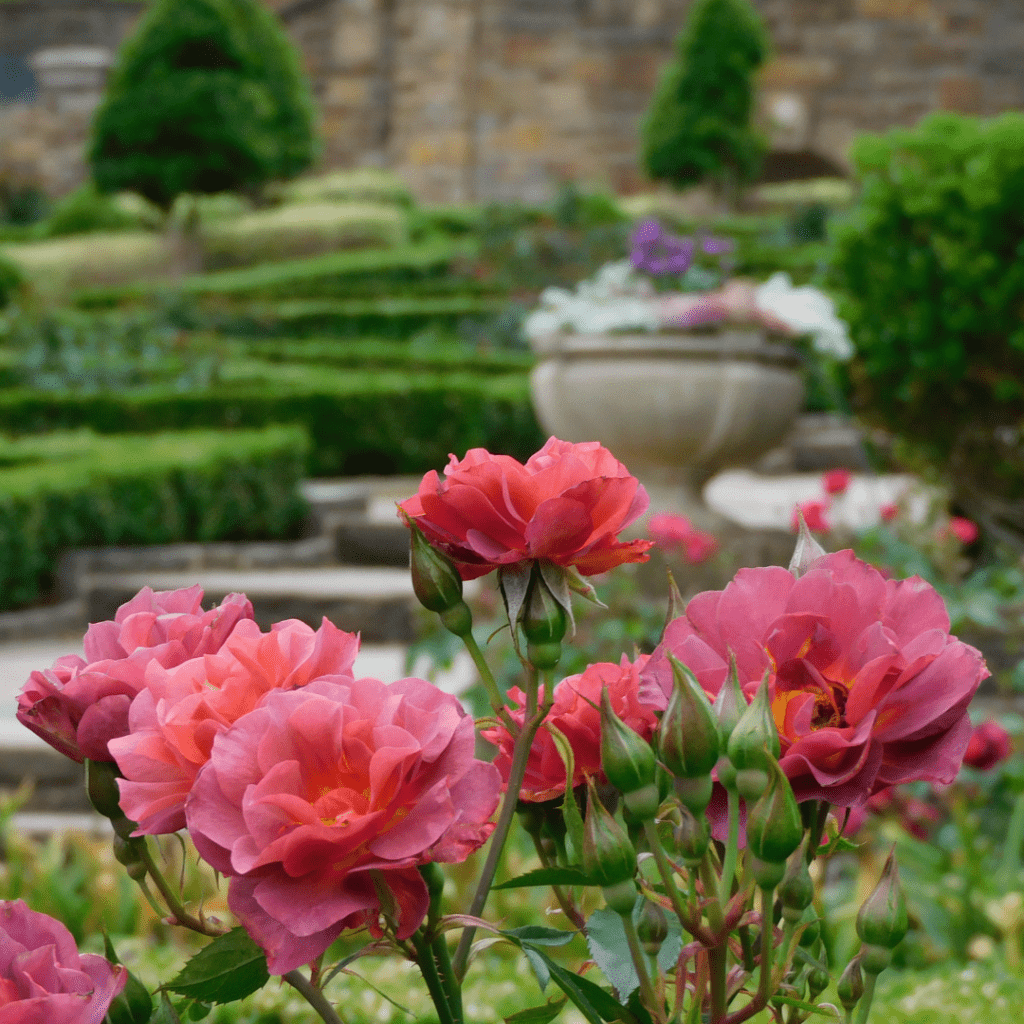
7. Understand the risks. You can do everything right and still end up with infected roses. It’s sickening to have to rip out plants you love, and maybe growing roses is not right the choice for you right now. There’s good reason to hope for the future: scientists are working hard, and disease-resistant cultivars should become available in time.
Your Questions about Roses: Our Experts Weigh In
Last week we went on social media to ask our followers what they wanted to know about growing roses. Here are some of their questions and the answers from the Garden’s horticultural team.
When is the best time to plant roses? Right now is a great time to plant roses. Temperatures are fairly low, the soil is more likely to be moist, and the plants can establish roots before the heat of the summer. Once temperatures start to rise in May, hold off on planting until they drop again in late fall. You can also plant roses in mid- to late-fall.
What soil, light, and weather considerations should I take into account for growing roses in DFW? Is there an ideal placement? Roses prefer soil that has been well mixed with organic matter (such as compost, humus, leaf mold and well-rotted manure) and has good drainage. Avoid planting in an area where water tends to stand after rain. You can improve soil drainage by mixing expanded shale into your soil. Raised flower beds are ideal.
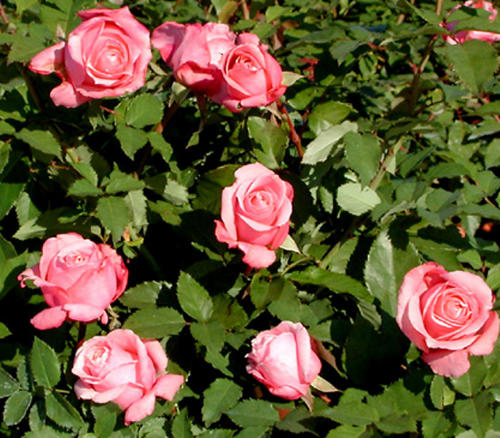
Pick a location with at least six hours of direct sunlight every day. Make sure you can provide good air circulation around the rose—this will help limit diseases such as black spot and rose rosette. Consider the expected size of the plant when fully grown and ensure at least a foot of clearance between shrubs.
Water roses every few days until they are well-established. Then water deeply once a week, and add a two- to three-inch layer of mulch to keep soil moist. When temperatures soar in the summer, up the frequency to twice a week. Water early in the morning, and avoid getting water on the leaves of the plant.
What is the best fertilizer and when do I to start fertilizing roses my roses? Fertilizers designed for flowering shrubs will be appropriate for roses, or you can look for fertilizers specifically designed for roses.
“We generally fertilize with a complete-blend granular fertilizer such as 14-14-14,” says Bauereisen. In other words, look for a fertilizer with 14 percent nitrogen, 14 percent phosphorus and 14 potassium—the three nutrients in fertilizer that are most important for a plant’s growth and health. Commercial fertilizers usually display the three numbers prominently on the packaging. The Garden will sometimes follow this up with foliar application (that is, apply fertilizer directly to the leaves of the roses)
Area gardeners debate how often you should fertilize your roses–the rose experts at the Texas A&M AgriLife Extension agency say “There is perhaps less agreement about how, when and with what to feed roses than any other aspect of their care.” Their recommendation is to feed once in the spring right after pruning, again after the shrub first develops buds, and then again about two months before the first frost.
Others feed their roses more frequently to increase blooms, up to once a month April through October. Many gardeners report that they find this rigorous schedule hard to maintain and nevertheless have healthy, blooming roses.
We have received additional questions about companion plants for roses, dealing with harsh weather, and the best fertilizers, and we’ll be providing the answers on both Facebook and Instagram over the following weeks.
It’s understandable that area gardeners are worried about investing in roses. But these gorgeous blooms with their heady scents can still grace your garden with a little work and a tolerance for risk.

